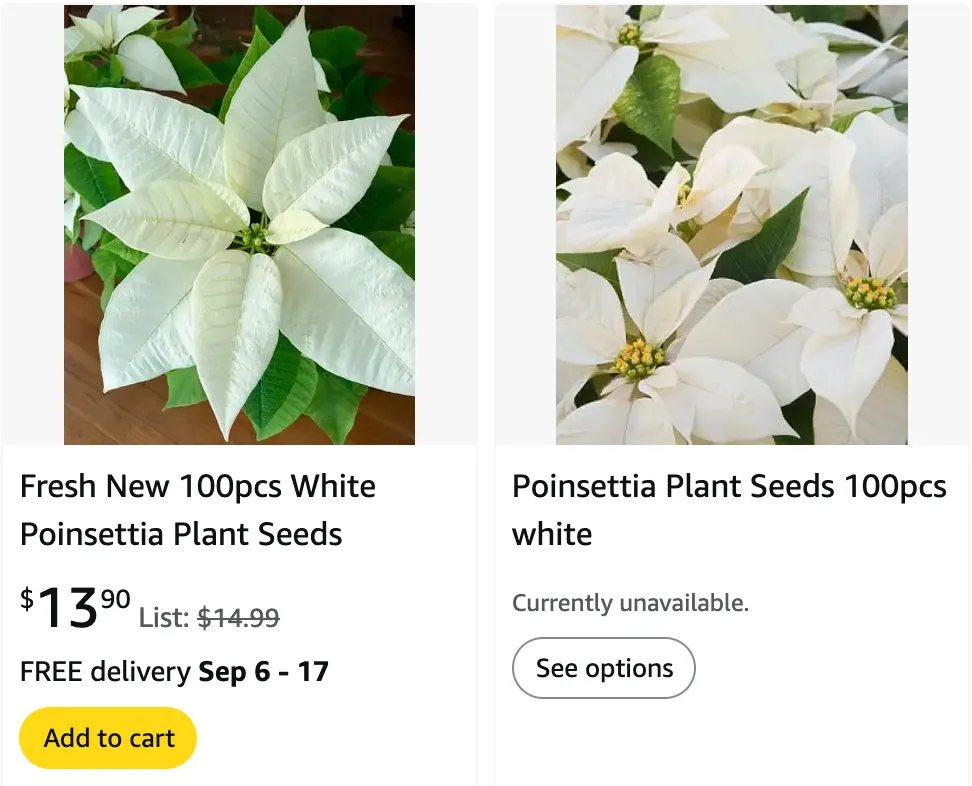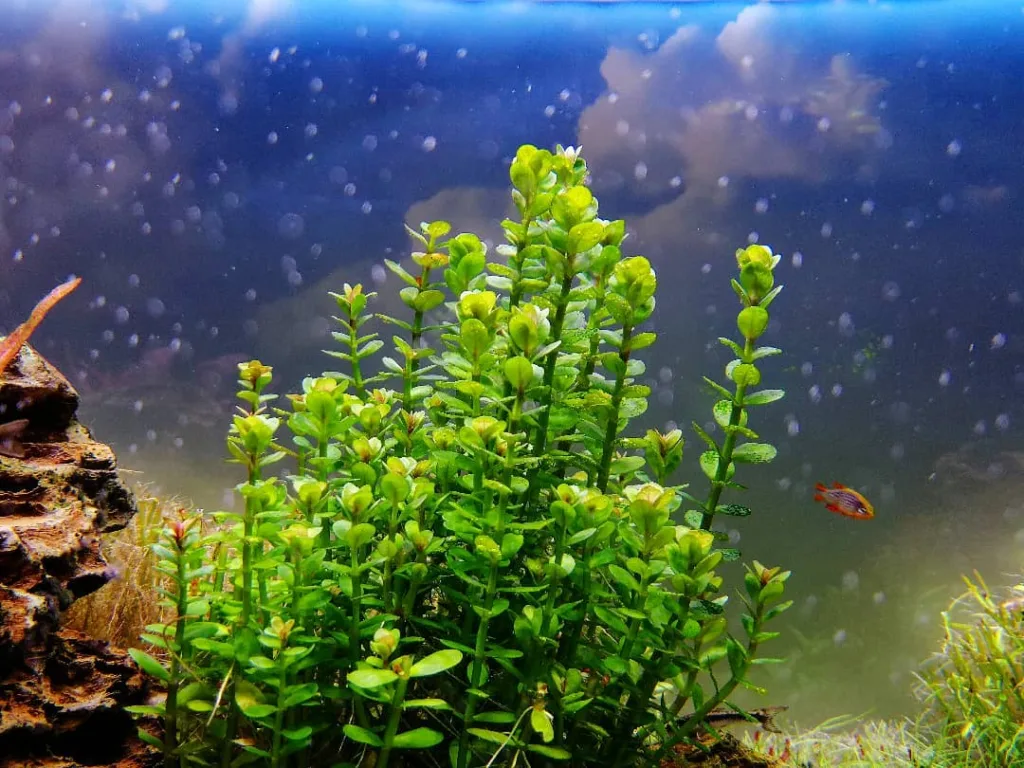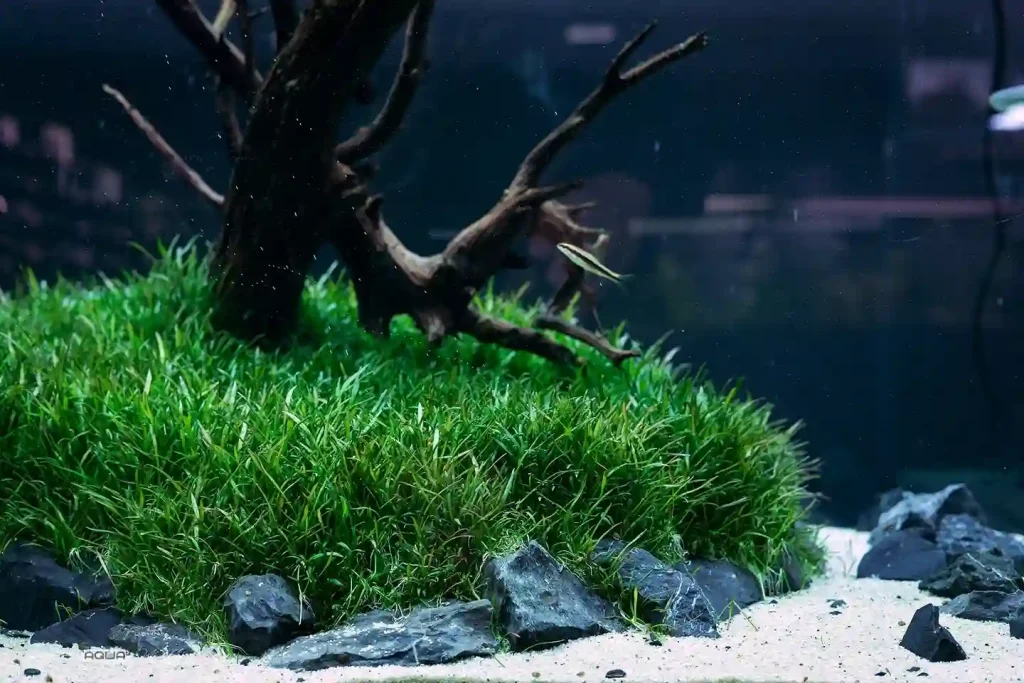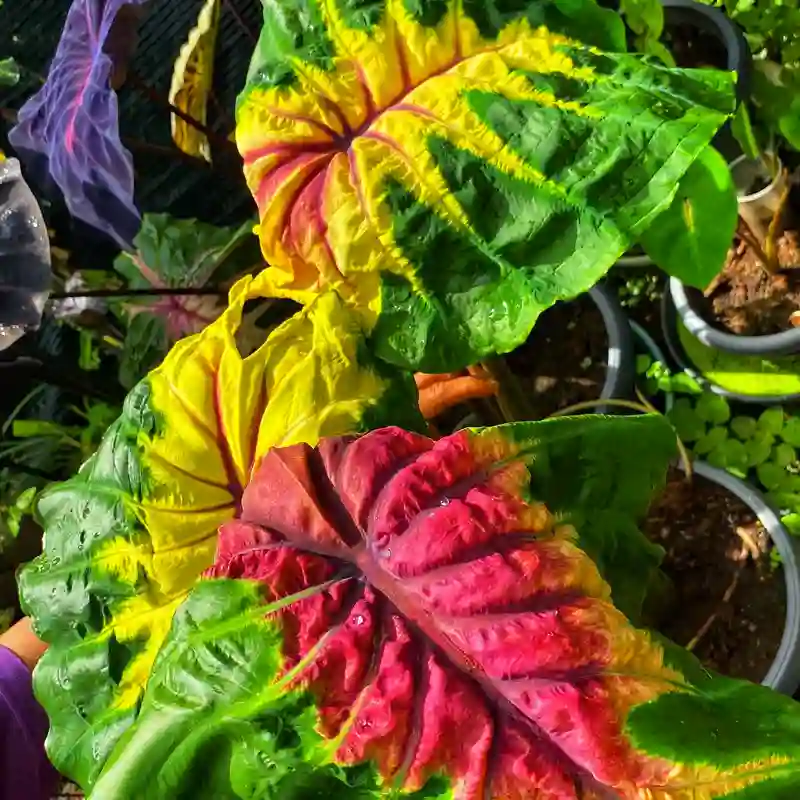
What is a White Poinsettia Plant?
The White Poinsettia Plant is a beautiful and popular holiday plant known for its creamy, white bracts that resemble flowers. These bracts are actually modified leaves that surround the plant’s tiny yellow flowers, called cyathia. While the traditional poinsettia is famous for its red bracts, the white poinsettia offers a more elegant and refined aesthetic. I find the White Poinsettia particularly appealing for creating a calm, wintery feel in my home during the holiday season.
How to Care for a White Poinsettia Plant?
Caring for a White Poinsettia Plant is relatively easy if you know the basic requirements. Here’s what I’ve learned from my own experience:
- Light: White Poinsettias need bright, indirect sunlight. I usually place mine near a window with filtered light, ensuring it gets around six hours of light daily.
- Watering: Overwatering is a common issue with poinsettias. I water mine when the top inch of soil feels dry. It’s crucial to ensure the pot has good drainage to prevent water from accumulating and causing root rot.
- Temperature: White Poinsettias thrive in a room with temperatures between 65-70°F. I avoid placing them near drafts or heating vents, as sudden temperature changes can cause the bracts to wilt.
- Humidity: These plants prefer moderate humidity. I’ve found that misting them occasionally during the winter months helps keep them looking fresh.
- Fertilizing: While the plant is blooming, I don’t fertilize it. But once the blooms fade and new growth starts in spring, I use a balanced fertilizer every two weeks to encourage healthy development.
How to Propagate a White Poinsettia Plant?
Propagating White Poinsettias can be a fun project, especially if you want to share this festive plant with friends or family. Here’s how I do it:
- Take Cuttings: In early summer, I cut a healthy stem around 4-6 inches long from the parent plant. It’s important to cut just below a node.
- Remove Leaves: I remove the lower leaves from the cutting, leaving only a few at the top.
- Dip in Rooting Hormone: I dip the cut end in rooting hormone to promote faster root growth.
- Planting: I plant the cutting in a small pot filled with a well-draining potting mix. After planting, I water it lightly and cover the pot with a plastic bag to create a humid environment, which helps the cutting root.
- Wait: Patience is key. I place the pot in a warm, bright location (but not in direct sunlight) and wait for roots to develop, which usually takes about 4-6 weeks.
What to Plant with a White Poinsettia Plant?
White Poinsettias make stunning companions with other holiday plants and winter-themed decor. Here’s what I like to pair them with:
- Cyclamen: These add a splash of color with their vibrant pink, red, or white flowers.
- Christmas Cactus: The flowing blooms of a Christmas cactus contrast beautifully with the poinsettia’s bold bracts.
- Ferns: The lush green fronds of ferns, like Boston Fern or Maidenhair Fern, create a soft backdrop that enhances the white poinsettia’s appearance.
- Orchids: For an elegant touch, I sometimes place a white poinsettia alongside a Phalaenopsis orchid. The combination of both plants creates a sophisticated, yet natural display.
How to Use White Poinsettias for Decoration?
White Poinsettias are a versatile plant that can be used for a variety of decorating purposes. I love using them as part of my holiday decor in the following ways:
- Centerpieces: A large, healthy White Poinsettia makes a stunning centerpiece for holiday dining tables or mantels. I usually place mine in a decorative pot or wrap it with festive fabric for added elegance.
- Accent Pieces: Smaller poinsettias can be placed around the house as accent pieces. I like to position them on side tables or windowsills for a festive touch.
- Wreaths: Incorporating poinsettias into wreaths is a creative way to showcase their beauty. I’ve seen some stunning wreath designs that use white poinsettias mixed with evergreen boughs and pinecones for a natural, wintery look.
Is the White Poinsettia Plant Toxic?
Yes, the White Poinsettia Plant, like all poinsettias, contains a milky sap that can be mildly toxic to both humans and pets if ingested. From my own experience, the toxicity is generally low, but it’s still something to be aware of, especially if you have curious pets or young children. If ingested, it may cause mild stomach discomfort or skin irritation. For safety, I always place my poinsettias out of reach of pets and kids.
How to Encourage Reblooming of a White Poinsettia?
Getting a White Poinsettia to rebloom can be a bit of a challenge, but it’s definitely possible with the right care. Here’s the process I follow:
- Rest Period: After the holidays, when the plant’s bracts fade, I reduce watering and allow the plant to rest. I keep it in a cool, dry place during this time.
- Pruning: In early spring, I prune the plant back to about 6 inches tall, encouraging new growth. At this stage, I resume regular watering and fertilizing.
- Darkness Cycle: To encourage blooming, I start a darkness cycle in early fall. For about 8-10 weeks, I place the plant in complete darkness for 14 hours a day and give it bright light during the other 10 hours. This mimics the short days and long nights of its native environment, triggering blooming.
With patience and dedication, I’ve successfully gotten my White Poinsettia to bloom again, and it’s such a rewarding experience.
Conclusion
The White Poinsettia Plant is more than just a holiday decoration; it’s a versatile, beautiful addition to any home. By understanding how to care for, propagate, and use it, I’ve been able to enjoy its beauty year after year. Whether you’re decorating for the holidays or looking to add a touch of elegance to your indoor space, the White Poinsettia is a perfect choice.
If i die, water my plants!



